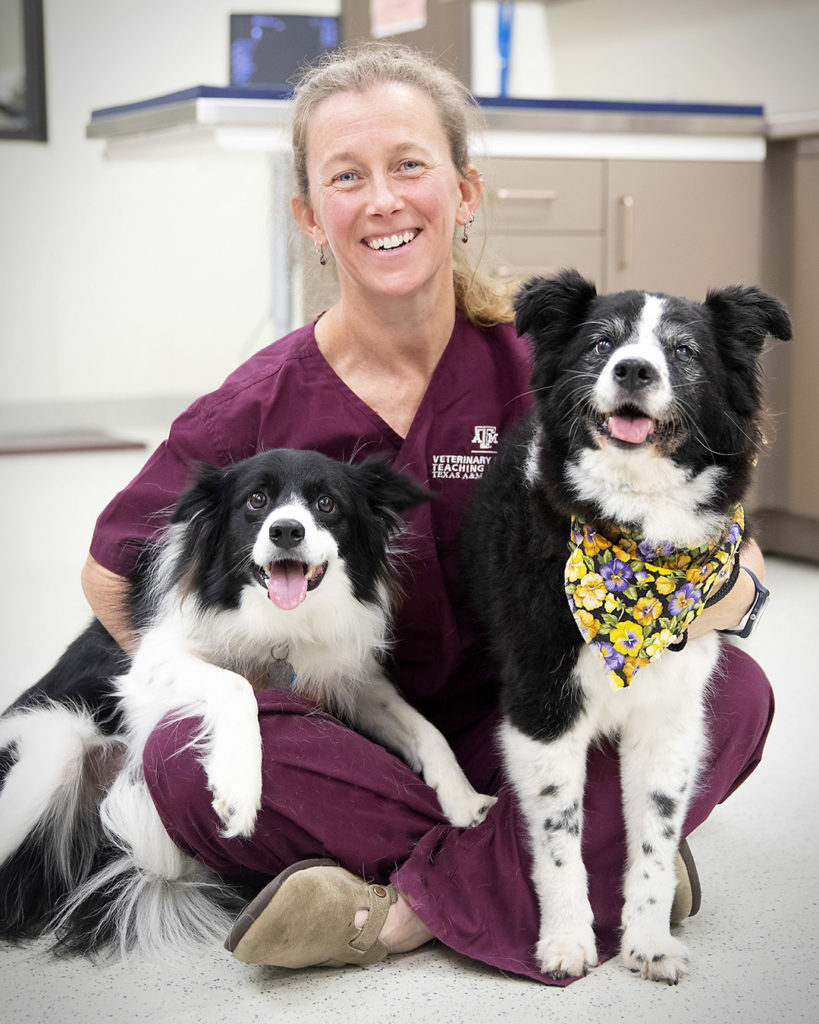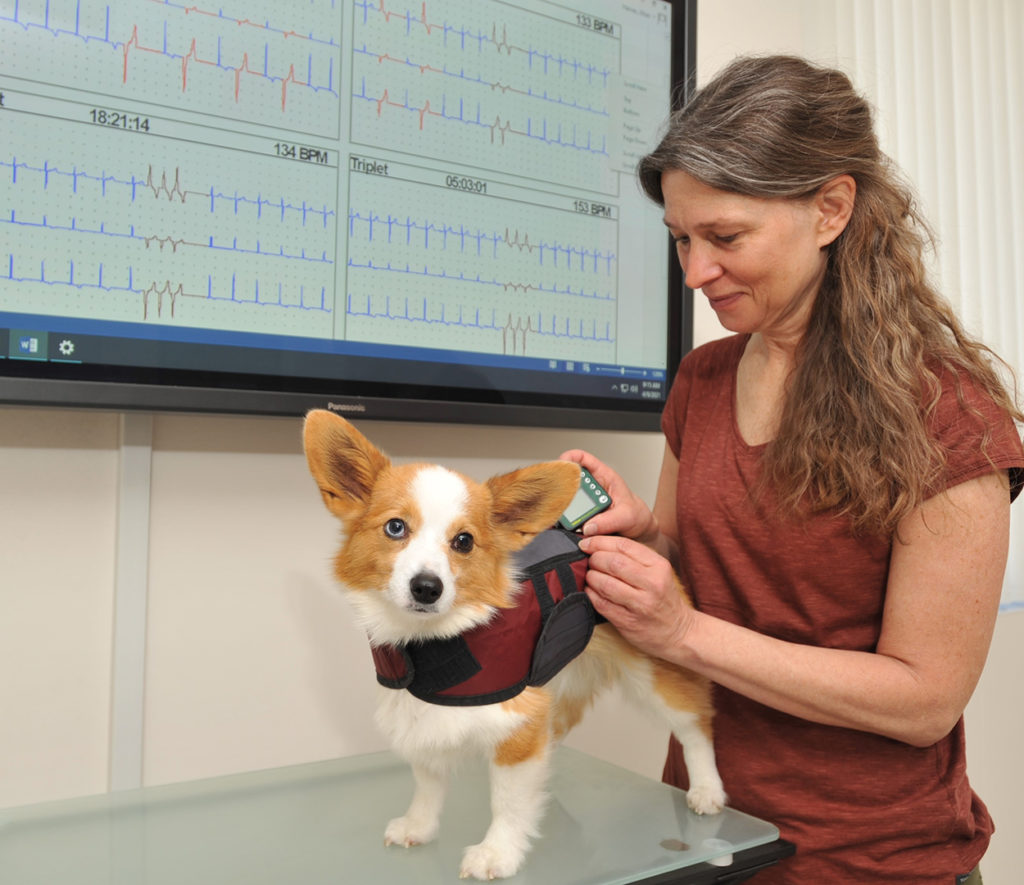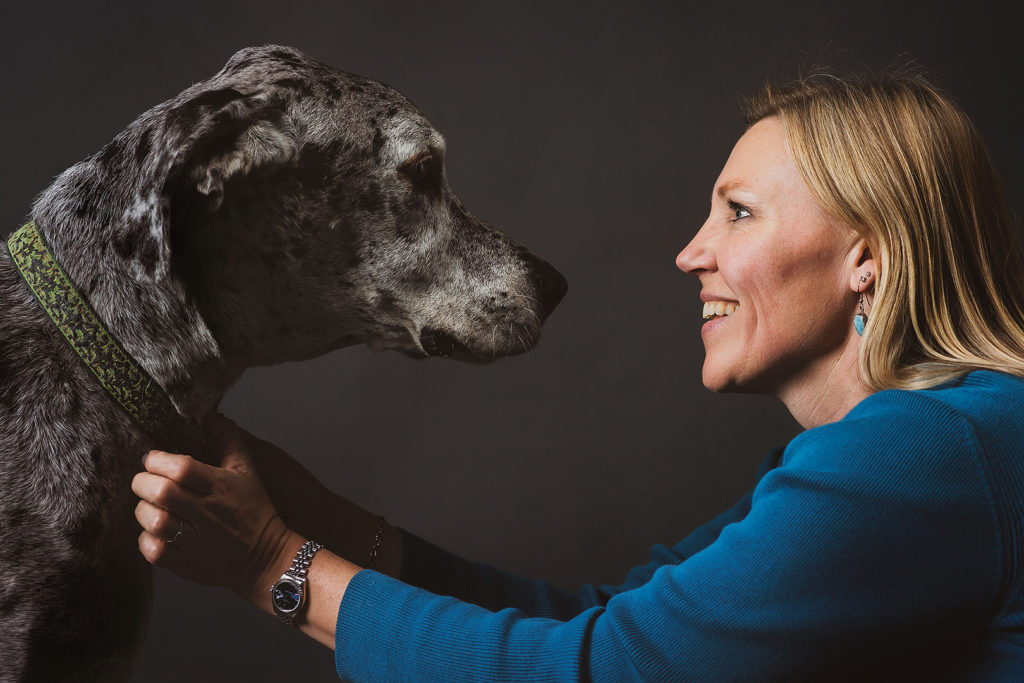Calling All Canines: Companions Still Needed For Dog Aging Project Research, New Studies
Story by Jennifer Gauntt, CVMBS Communications

There are almost 90 million dogs living in the United States.
So when the Texas A&M College of Veterinary Medicine & Biomedical Sciences (CVMBS) and University of Washington (UW) School of Medicine launched the Dog Aging Project (DAP) in November 2019 seeking canine participants, the research team knew owners across the country would answer the call.
And answer they did.
Nearly 30,000 dog owners have volunteered for this community science research project dedicated to understanding the biological and environmental determinants of canine aging.
Now, more than a year later, the Dog Aging Project is looking for additional canine participants for this research and affiliated study opportunities.
While all kinds of dogs are still welcome to join, DAP researchers are specifically seeking dogs, both purebred and mixed breed, in the following categories:
Breeds
- Large breed dogs weighing between 70-100 lbs., especially breeds other than Labradors, retrievers, and German shepherds (the most common breeds in the U.S.)
- Giant breed dogs weighing more than 100 lbs., such as Great Danes, Wolfhounds, and Mastiffs
- Hound dogs, spaniels, pointers, terriers, bulldogs, and pit bulls, including mixes
- Working dogs, such as herding, K9, service, agility, and mushing dogs, etc.

Geographical regions
- Dogs living in rural areas, small towns and large cities, in particular
- Dogs living in regions of veterinary teaching hospitals partnering with DAP in an upcoming clinical trial
- Texas A&M
- University of Georgia
- Iowa State
- Colorado State
- Oregon State
- Washington State
- North Carolina State
“Healthy aging is the result of both genetics and the environment. It’s really important for us to study dogs who live in all kinds of environments, from farm dogs to city dogs,” said Dr. Daniel Promislow, DAP principal investigator and co-director and professor of pathology and biology at UW. “Right now, we are specifically recruiting dogs from areas where we don’t have as many participants as we’d like to.”
Puppies
Because the DAP is a 10-year study, puppies are especially beneficial to the project because enrolled puppies can participate throughout their entire lives.
“Better understanding the health effects of the presence and timing of spaying and neutering your dogs is of particular interest to the veterinary community,” said Dr. Kate Creevy, DAP chief veterinary officer and CVMBS associate professor of veterinary internal medicine. “Following puppies through the process of spaying or neutering or through reproductive activity will tell us a lot about how these events influence healthy aging.”
Studies

As the largest research data-gathering program of its kind, the DAP offers numerous opportunities to glean important information on canine lifespan, but also canine healthspan, which refers to the period of life spent free from disease.
Because the nature of the project is collaborative, all data collected by the DAP are available to researchers worldwide through Terra, a cloud-based computing platform, located at the Broad Institute of Massachusetts Institute of Technology and Harvard University.
The DAP research team includes more than 40 experts from a variety of fields and institutions, who use the information submitted by DAP participants and stored in Terra to investigate many aspects of canine health and longevity. These study areas include:
- Genetics
- Microbiology
- Toxicology
- Canine cognition
- Age-related mobility
- Cardiology
- A clinical drug trial of rapamycin
“Aging is a complex phenomenon. By combining insights from many areas of veterinary research, the Dog Aging Project aims to develop the field of veterinary geroscience and ultimately develop interventions that will help dogs live longer, healthier lives,” said Dr. Matt Kaeberlein, DAP co-director and UW professor of pathology.
Joining the Pack

To participate in the Dog Aging Project, owners may nominate one dog per household at the project website, DogAgingProject.org; they are then invited to set up a personal research portal where they answer scientific surveys about their dog and upload veterinary records.
As a member of the DAP Pack, participants will be asked to complete an annual health survey about their dog, which takes two to three hours, and other, shorter surveys (estimated at 10-30 minutes each) throughout the year.
Once a dog is a member of the DAP Pack, the dog may become eligible for a variety of other research activities, all of which are voluntary; these could include genetic analyses, the collection of biological samples, or even participation in a clinical trial.
“By summer 2021, we’re hoping to have 60,000 Pack members eligible for additional studies,” Creevy said. “These animals bring so much to our lives. Our entire team is dedicated to extending quality of life into advanced age for dogs and their humans.”
About the DAP
The DAP is a 10-year, $23-million project funded by the National Institute on Aging (NIA), a part of the National Institutes of Health (NIH).
“The Dog Aging Project came in as an innovative approach to understand the process of aging,” said Dr. Francesca Macchiarini, chief of the biological resources branch in NIA’s Division of Aging Biology. “This is because of the remarkable similarities between humans and their canine companions. They share the same environment, have similar lifestyles and, when it comes to aging, both species develop the same types of diseases.
“We’re going to learn in a relatively shorter period of time than we would to study the human population a lot about how biology, lifestyle, and environment can affect healthy aging in dogs, and then have that be applicable to humans,” Macchiarini said.
For more information, or to nominate your dog, visit dogagingproject.org.
###
For more information about the Texas A&M College of Veterinary Medicine & Biomedical Sciences, please visit our website at vetmed.tamu.edu or join us on Facebook, Instagram, and Twitter.
Contact Information: Jennifer Gauntt, Director of CVMBS Communications, Texas A&M College of Veterinary Medicine & Biomedical Sciences, jgauntt@cvm.tamu.edu, 979-862-4216; Leila Gray, UW media relations, leilag@uw.edu, (206) 475-9809


